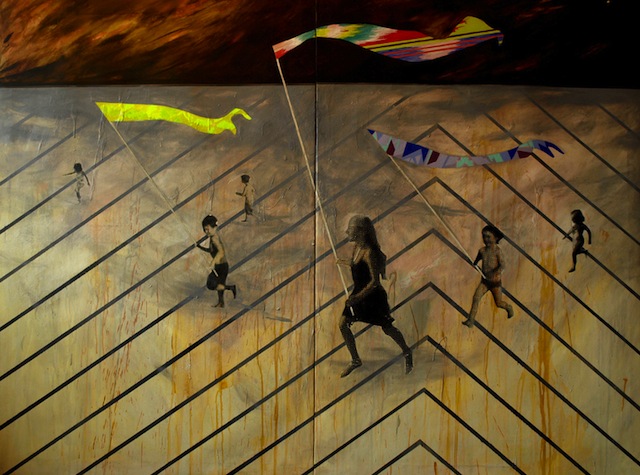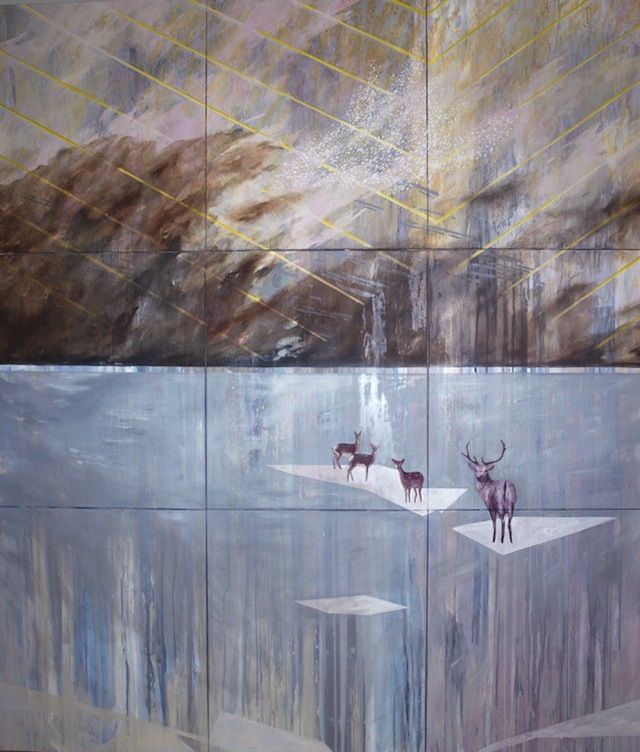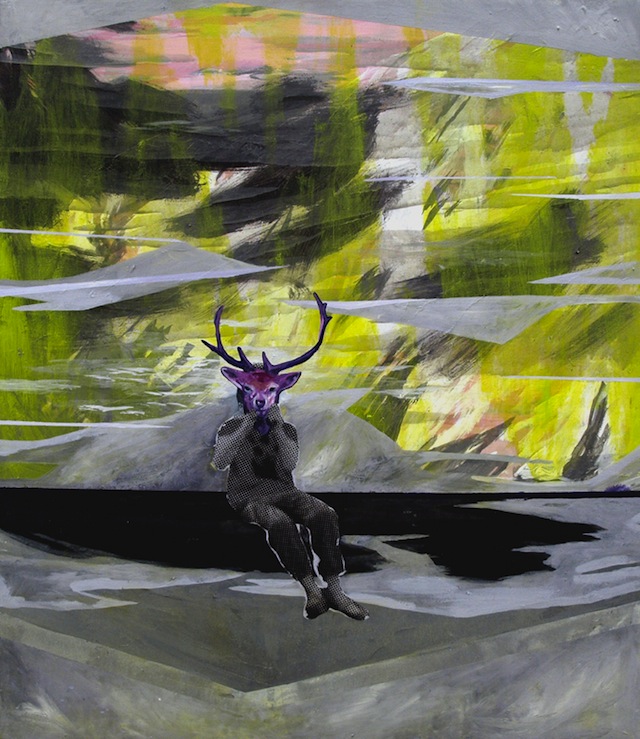Art
Intimate myth and transhistorical space: the paintings of Vanja Trobić
Pairing painting and collage techniques, artist Vanja Trobi? creates atmospheric and metaphorically rich work that addresses both personal and universal concerns, such as existence, spirituality, and materiality, with a fresh and youthful mysticism. Since graduating from the Academy of Fine Arts in Zagreb, Trobi?, who currently lives and works in Rijeka, has participated in a number of solo exhibitions and group shows, including Erste fragmenti 9. Trobi? was also recently invited to participate in the 2nd Biennale of Painting, currently on view at HDLU in Zagreb. Recently, she told us more about her work and the ideas that inspire her.
Can you tell us a bit about your work? What are some of the themes you explore?
While painting dreamlike visions of what I call “intimate myths,” my preoccupation is our world as time-space continuum. I like to think of my work as a gateway to a transhistorical space. … I explore the ideological subordination of humans to material spheres, lack of spirituality, and the identity development of the individual and society. The omnipresence and absoluteness of abstract space in my work emphasizes the timeless and melancholic character of humans lost in post-apocalyptic world.
My paintings are based on contrasts, “crossing borders” and the state “in between.” The series Visions of the underworld (2010-2013) thematizes the dichotomies of nature/culture, individual/community, childhood/maturity, spirit/body, immortality/ mortality. Through the latest series Places of power/On the other side of reality and the exhibition Inner space of the world: Limbo/Time crystals, I explored the mythical place of eternal return, where we are coming back to the origin by researching and recapitulating our existence.
The concept of “underworld” reflects on our consciousness as well, symbolizing the place in which the individual psyche meets the archetypal currents of human existence and nature … In a way, this is constant and unavoidable mission of humans in order to reach eternity – to survive. In this context, “places of power” or “inner space of the world,” whether as physical places or the human spirit, reveal the urge to grow consciousness and gain power. This is the energy of life that we all possess.
Children feature strongly in your recent work. Why is that?
Due to the strong technophilic characteristics of our time and alienation from nature, my main concern is to emphasize the importance of a growing self-awareness and responsibility towards our future. Children are the carriers of our future, a small army of tomorrow. Besides that, they symbolize change and regeneration, just like the water they are usually connected to in [my] paintings.
The children represent humans in general, always secondary to the dreamlike spaces they inhabit, so the reason they are covered with a dotted grid is their equality in alienation. Their empty eyes are there to hide their individual identity and to warn about them being lost and corrupt already. Unlike the human figures, animals and objects are clearly defined – their roles are clear and constant.
Is there any particular message or goal you have in mind while creating art?
The themes I mentioned have been my general occupation since 2010 … my first goal was not to send a direct message, but to see if a narrative part I imagined would be visible at all. In time, I sort of cleaned my paintings to keep only the key elements to set the story. … My work is [now] simplified in visual language, but rich in its metaphorical character.
There is a story behind each of my paintings. It is like a combination of intimate visions and philosophical thoughts, myths, and other historical ancestries. It’s amazing how so many of us don’t even know our own ancestry, not even the surname meaning of our families, that’s why a connection is important, it can influence us in ways we never knew. I believe art can still move [us] in a meditative and spiritual way, providing us the choice of free-thinking through imagination. Painting is like visual poetry.
Why painting? Do you work with other media?
I enjoy painting very much and it’s the best way for me to express [my ideas] right now. Occasionally I paint murals in public spaces as well, mostly within the Street Art Museum of Zagreb (MUU), and I have to say I’m really happy to be part of such projects! That way we are making art accessible to everyone.
Since I graduated last year, there has been no time for me to experiment in any other medium, though I’m attracted to various forms of site-specific installations and design. But what constantly draws me back to painting is my belief that when you start something, you should get the maximum out of it.
What or who inspires you?
So many things inspire me – philosophy, music, nature, art in general, my friends … I guess I’ve built some sort of a logical system that combines all of my influences, and … I just get the vision of the image I’d like to paint. Sometimes it takes a while for an idea to break through, but I have never felt that I was not inspired…
I don’t have role models [who are] other artists or painters. I can relate to any form of art if it has that certain something. I enjoy and admire artwork that is the opposite of mine in character or [that has an] energy my work doesn’t possess.
What’s the climate like for young artists in Croatia? Is it difficult to navigate the art world?
I wouldn’t say the Croatian art world is so huge that one can’t find his way through. Of course, it takes quite a lot of energy and hard work, but our art scene is rather small … so it is easy to meet people and make contacts. But it has its boundaries as well – without a [substantial] market, it is not possible to make a living off of art.
Nevertheless, we are supporting each other through exhibitions and various projects or programs that are not necessarily institutionalized. [As for] Zagreb, one could say there is more and more going on with time. If the scene is not vibrant at the moment, it certainly is getting warmer.
How do you see your work evolving in the future?
I don’t tend to make long-term plans, you never know what awaits around the corner. Surely I’ll keep on painting … though I’ll need some time to clear my mind and make space for new ideas and projects. I have this inexplicable urge to make something completely different.
Interview by: Elaine Ritchel
Image source: Vanja Trobic











